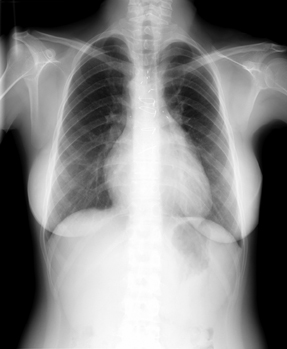Prevent disaster by backing up data
Natural disasters can wreak havoc on a practice's medical records. Five simple tips can help create a backup system that could avoid clinical data loss, and the resulting lawsuits and penalties.
Hurricanes, power outages, fires and viruses can wreak havoc on your practice's electronic health record (EHR) and practice management system. Also consider the monumental inconvenience of financial or clinical data loss and the consequential risks of lawsuits, fines and penalties.
You can avoid becoming one of these horror stories by setting up a disaster-proof backup system. It could save your practice from financial ruin, and your patients will be safer if you never lose access to clinical data.
Here are some common data backup and recovery strategies.
Types of backup
- Disk backup (e.g., duplicate server). Backing up systems to a disk or a separate server can reduce the downtime a practice may experience when restoring the system.
- Tape backup. Magnetic tape backup systems are widely used in the industry given their low cost. Keep copies of the backup tapes off-site in case of natural disaster. Many storage companies provide tape storage options. Also, tapes do go bad over time so it is important to test and replace them periodically.
- Online/cloud backup. Data backed up over the Internet goes to “server farms” run by practice management system/EHR vendors or commercial online backup companies.
- Vendor “cloud-based” backup. Many vendors offer cloud-based data backup and monitoring services. This is a good option, especially for small practices, because the vendors can help monitor performance while maintaining the system. Most vendor backup services also help you restore both the data and software to your practice.
- Online backup company. An alternate approach is to have your data backed up through a HIPAA-compliant online backup service. Although these commercial companies may not offer the same level of support for your computer system, they offer a data storage alternative.
Other backup tips
Here are some recommended strategies to consider when developing a data backup and disaster recovery plan for your practice.
- Talk to your vendor. It is critical to discuss backup and recovery with your vendor to make sure your system, whether obtained through the vendor or separately, meets your needs and is guaranteed to keep your data safe no matter what happens. Note that if you have a Web-based system, the vendor or hosting company is typically responsible for maintaining backups of the system and data. However, you should establish the specific disaster recovery strategies and the amount of downtime expected with the system. In addition, you should make sure that any image or document files attached to the patient's chart are also backed up.
- Test the backup. Test whether you can restore your system from the backup. Many practices think they are successfully backing up their systems only to discover that the backup is not capturing the patient or financial data correctly. For instance, some EHR system updates can change the indexing of the database, potentially causing data losses. Such indexing problems are riskier for practices that have substantial EHR customizations.
- Set automatic backups. Make sure that your system is set to back up automatically on a regular basis. How often you back up your system depends on how much data you are comfortable losing. Can you afford to lose 24 hours' worth of data, or do you need to back up more frequently? On the other hand, backing up too frequently can slow the system's responsiveness. Having the system set to back up after hours reduces performance-related issues.
- Duplicate backup and redundancy systems. One backup may not be enough. The best strategies frequently include a combination of backup options.
- Have a strategy to deal with downtime (e.g., when the electronic systems are non-functional). Even redundant systems can be down for several hours before they can be restored. In such cases, you may need to revert to paper or other documentation strategies that can be used in the interim. One consideration is to make sure you have adequate battery during power outages to run a system backup. Some practices subscribe to more than one type of Internet connectivity so if the cable service goes down, a DSL service can be used as backup.
Finally, don't forget interfaces, which can go down, and scanned documents, which aren't always backed up the same way. Many EHR systems and labs have queuing systems that record which tests were ordered and received but not successfully transmitted when the interface was down. Reverting to a fax-based system may be a workaround while the issues are resolved. Make sure that static or scanned document files and image files are backed up also. Memory-intense imaging systems may need a different strategy due to space considerations.
For more information, go to the AmericanEHR Partners, a collaboration between Cientis Technologies and the American College of Physicians. Another article on the subject, “Backups and disaster recovery for your practice data: What's your plan?” can be found online.




